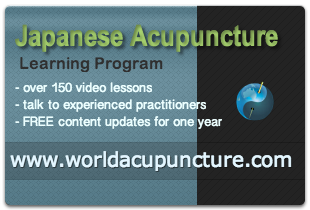Hi,
Thanks for dropping by, I hope this post might be of some benefit to you in clinical practice.
The following diatribe was written in response to a post on the http://www.acupuncture.com.au forum regarding the depth of needling required to elicit an effective response from the point Zusanli ST36.
Previous posts stated that it was safe to needle Zuzanli up to a depth of 5cm and commonly to a depth of 3cms.
Why randomly needle to that depth?
Because we can?
Because it is ‘safe’ to do so?
Deeper the better?
Are we tonifying or dispersing the patient if they squirm with discomfort from our insistence that we can needle to this depth because it is ‘safe’ to do so or simply because ‘we can’?
Why would we want to cause a significant dispersion of qi from Zusanli ST 36, ostensibly ‘most powerful tonifying point on the body’?
What patient with what condition/s requires needle insertion of Zuzanli to a depth of 5cm?
What of their nationality, age, constitution or cultural disposition?
Perhaps depth of needling should depend on what we want to achieve.
Tonify, disperse, transfer, yang qi, yin qi, blood ?
Why bother needling Zusanli ST 36 just 3 mm?
We could go to 5mm+/- when administering needle head moxa or we have a very specific reason to generate an immensely dense rather than refined da qi sensation.
OR
We could stick it in 3 – 5 cm, regardless of the condition of the patient.
Have you found that simply touching/brushing the surface of the point/meridian can be amazingly effective particularly when working with younger children, babies, oversensitive, stressed, utterly exhausted adults and the chronically ill.
Whatever it takes for us to ‘get a result’.
And I hear the patient say.
‘The less discomfort, the better!’,
Conversely if the patient has a severely worn hip joint and wants to delay surgical replacement, diving deeper is definitely an option.
Could this style of needling be any different proposition from the needling of one of the body’s most powerful ‘command’ points?
I ask of myself and you the reader?
Should we consider varying the depth of our needling according to the individual patient?
What level of yang qi or substances do we want to influence primarily on each individual patient?
How superficial/deep,deficient/excess is the Qi in this patients xyz meridian?
How deep should we to needle to influence this patients blood or yin qi?
Is the patient’s condition primarily constitutional or are other extraneous factors at play?
Is the patient (the silent majority) scared witless of needles???
If so, is there any way we might use this rampant ‘negative’ energy to our clinical advantage and allay their fears of pain and persecution?
For mine, these considerations are also vital if we are to elicit maximum effectiveness from this amazing medicine for each INDIVIDUAL patient.
Hope that has stoked your clinical fires a little.
My techie is working diligently to discover why I am unable to post images or audio – visual content.
When that situation is resolved be ready for lots of images and video as I ramp it up somewhat.
In the meantime I trust you have a good time for a long time,
Alan

Speak Your Mind